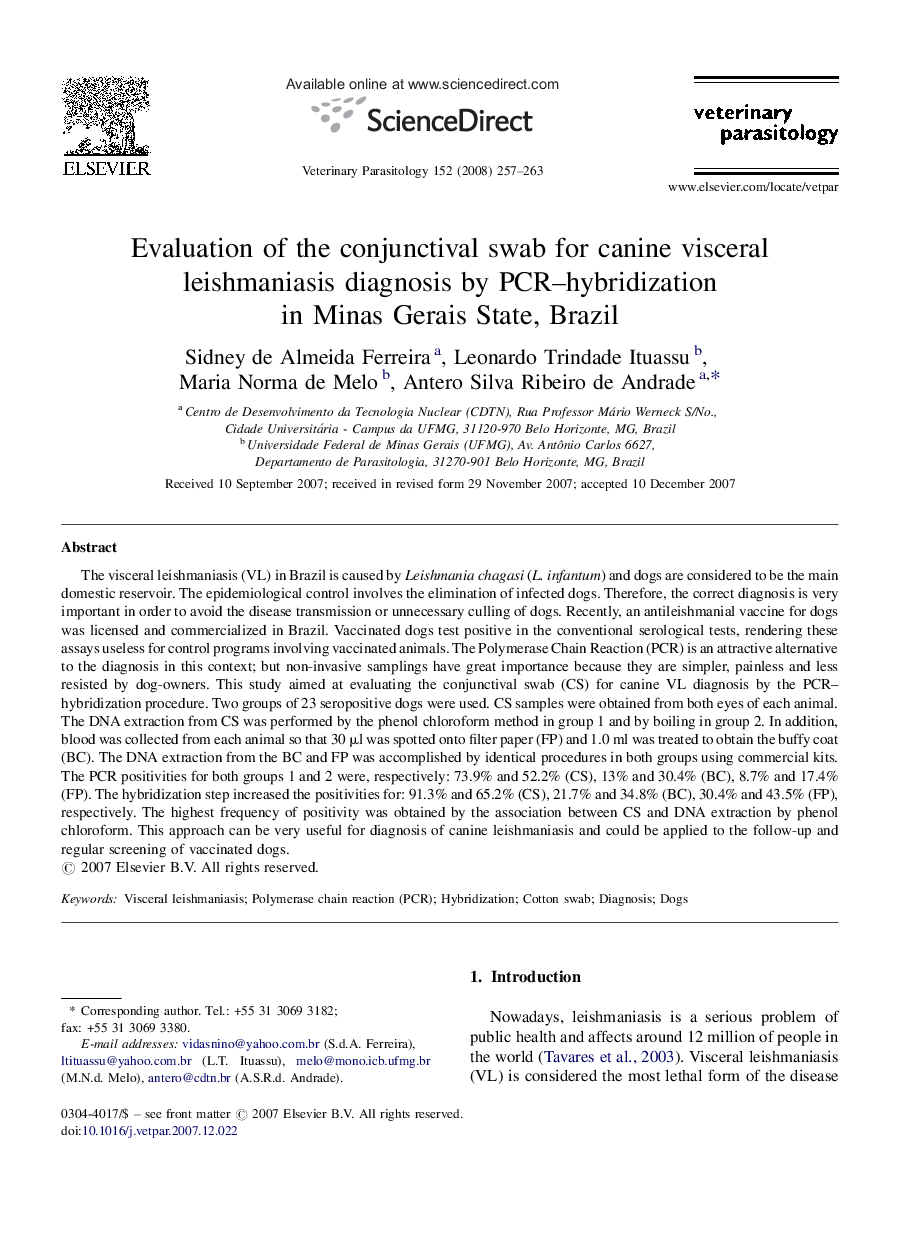| کد مقاله | کد نشریه | سال انتشار | مقاله انگلیسی | نسخه تمام متن |
|---|---|---|---|---|
| 2471762 | 1555771 | 2008 | 7 صفحه PDF | دانلود رایگان |

The visceral leishmaniasis (VL) in Brazil is caused by Leishmania chagasi (L. infantum) and dogs are considered to be the main domestic reservoir. The epidemiological control involves the elimination of infected dogs. Therefore, the correct diagnosis is very important in order to avoid the disease transmission or unnecessary culling of dogs. Recently, an antileishmanial vaccine for dogs was licensed and commercialized in Brazil. Vaccinated dogs test positive in the conventional serological tests, rendering these assays useless for control programs involving vaccinated animals. The Polymerase Chain Reaction (PCR) is an attractive alternative to the diagnosis in this context; but non-invasive samplings have great importance because they are simpler, painless and less resisted by dog-owners. This study aimed at evaluating the conjunctival swab (CS) for canine VL diagnosis by the PCR–hybridization procedure. Two groups of 23 seropositive dogs were used. CS samples were obtained from both eyes of each animal. The DNA extraction from CS was performed by the phenol chloroform method in group 1 and by boiling in group 2. In addition, blood was collected from each animal so that 30 μl was spotted onto filter paper (FP) and 1.0 ml was treated to obtain the buffy coat (BC). The DNA extraction from the BC and FP was accomplished by identical procedures in both groups using commercial kits. The PCR positivities for both groups 1 and 2 were, respectively: 73.9% and 52.2% (CS), 13% and 30.4% (BC), 8.7% and 17.4% (FP). The hybridization step increased the positivities for: 91.3% and 65.2% (CS), 21.7% and 34.8% (BC), 30.4% and 43.5% (FP), respectively. The highest frequency of positivity was obtained by the association between CS and DNA extraction by phenol chloroform. This approach can be very useful for diagnosis of canine leishmaniasis and could be applied to the follow-up and regular screening of vaccinated dogs.
Journal: Veterinary Parasitology - Volume 152, Issues 3–4, 15 April 2008, Pages 257–263